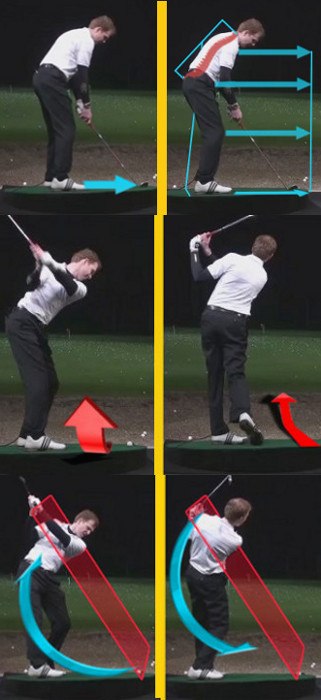
When hitting shots from a downhill lie, there are a number of adjustments that need to be made, not only technically but also mentally.
A downhill lie throws up a number of different challenges. First of all, the downhill lie will effectively de-loft any club used depending on the overall distance of the shot.
The reason the club is de-lofted so dramatically by a downhill slope has to do with the way golfers set up their body and stance on such a shot. If the ground is perfectly flat when playing a standard 7 iron shot, a golfer’s spine angle is almost perpendicular to the lie of the land. This allows a golfer to set the rest of their body around this spine angle and place the club behind the ball, presenting its true amount of loft. However, when the slope begins to tilt towards the target, the spine angle must also follow to remain perpendicular with the slope. This also tilts the golfer towards the target and de-lofts the club face in the process.
Because of the way a downhill slope determines how the body tilts, it also determines the angle of attack achievable into the ball. On normal, flat lies, the swing arc, the circular motion created by the club head around the body, bottoms out just after impact. On a lie which tilts towards the target, this swing arc also needs to be adjusted. On some downhill lies, it will not always be possible to bottom out the swing arc just after impact on a normal iron shot but rather skim across the slope and sweep the ball away. This is one of the reasons that a downhill slope is a challenging lie to most golfers.
When striking shots off a downhill lie, the easier swing path to adopt is from out-to-in, cutting slightly across the body. This is not essential but sometimes preferable and will mean a slight amount of fade spin being imparted on the ball. This also needs to be taken into account when playing shots off a downhill slope.
When faced with a downhill lie, players can follow this routine to achieve more success.
1. First get the yardage of the shot and then assess the lie. If the distance is your normal 7 iron shot but the slope forces your spine angle to severely tilt towards the target, then the de-lofting effect on the iron must be taken into account and could change club selection dramatically.
2. Once the yardage and club have been selected, decide if an out-to-in swing path would be preferred and adjust the alignment to match.
3. Set the body to match the slope, with the spine angle tilted to match the slope. Keep the weight distribution as even as possible on both feet and don’t let the ball position drift too far forward in the stance as this will cause you to ‘reach’ for the ball during the down swing.
4. When swinging, follow the slope and clip the ball from the surface after impact and allow the body weight to flow forwards down the slope and into a full finish position.






